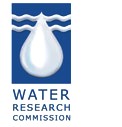IGCP 565 Project Workshops

|
IGCP 565 Workshop 5: Water Security for Africa: Bringing Together Research, Monitoring, and Managing
October 29-30, 2012
Johannesburg, South Africa |


|

|
GRACE products for hydrology
Jürgen Kusche1, Annette Eicker1, Henryk Dobslaw2
1 Astronomical, Physical and Mathematical Geodesy Group, Institute of Geodesy and Geoinformation, University of Bonn, Nußallee 17, D-53115 Bonn, Germany
2 Department 1: Geodesy and Remote Sensing GFZ Potsdam, Telegrafenberg, D-14473 Potsdam, Germany
The Gravity Recovery and Climate Experiment (GRACE) satellite mission, a collaboration of NASA and the German Aerospace Centre DLR, provides K-band ranging and GPS tracking data since 2002. From these data, three official analysis centres routinely compute monthly global gravity models, which can be subsequently converted to maps of total water storage anomalies at spatial resolution of few hundred kilometres. These maps, updated in regular reprocessing and meanwhile available as release 5 versions, have found numerous applications in studying the water cycle and, in particular, in supporting large-scale hydrological modelling. GRACE level-2 data products are distributed with latencies of 6-12 weeks in form of sets of spherical harmonic coefficients. We will demonstrate recent improvements in resolution, i.e. through integrating improved short-term background models. However, next to these standard products a number of groups compute non-standard data products that are provided at higher temporal resolution, are tailored to specific regions or exhibit less noise in general due to specific post-processing. We will first illustrate the application of GRACE standard and non-standard products for supporting hydrological modelling. Then, I will discuss the potential and limitations of future satellite gravity / mass transport missions that are currently under investigation.
|



